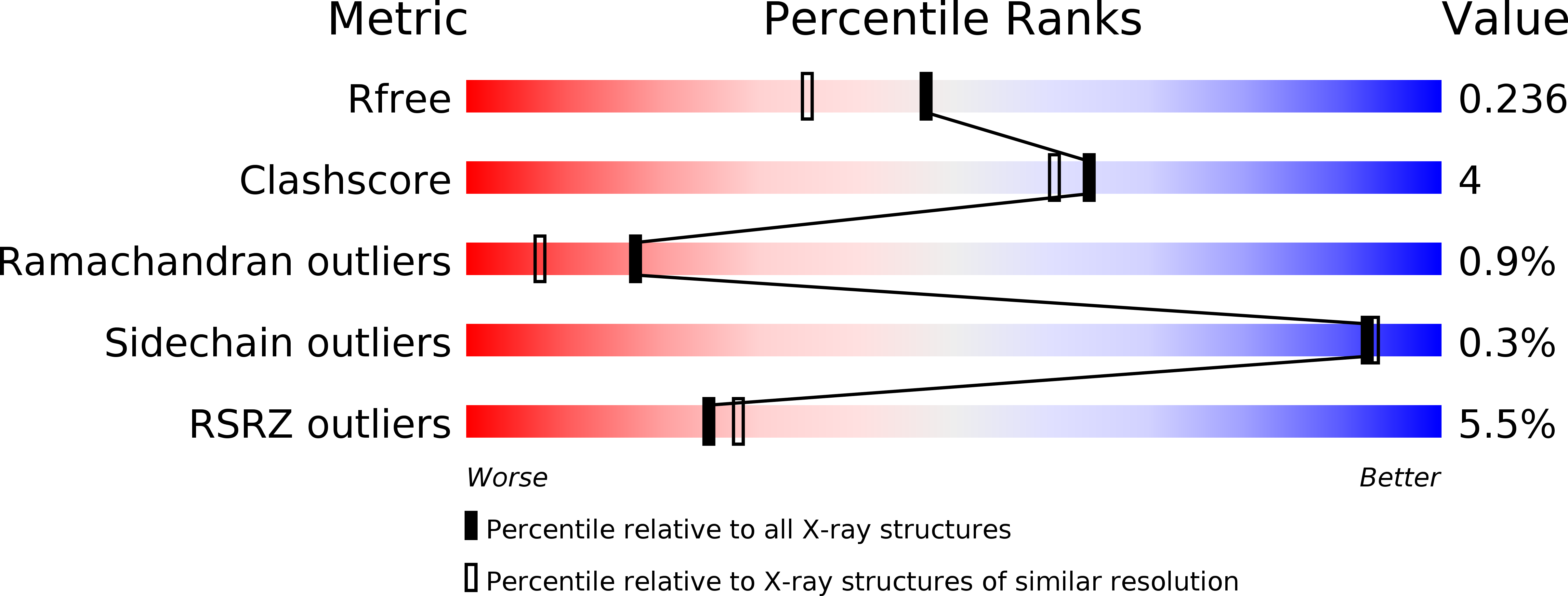Crystal structure of the branching enzyme I (BEI) from Oryza sativa L with implications for catalysis and substrate binding.
Noguchi, J., Chaen, K., Vu, N.T., Akasaka, T., Shimada, H., Nakashima, T., Nishi, A., Satoh, H., Omori, T., Kakuta, Y., Kimura, M.(2011) Glycobiology 21: 1108-1116
- PubMed: 21493662
- DOI: https://doi.org/10.1093/glycob/cwr049
- Primary Citation of Related Structures:
3AMK, 3AML - PubMed Abstract:
Starch-branching enzyme catalyzes the cleavage of α-1, 4-linkages and the subsequent transfer of α-1,4 glucan to form an α-1,6 branch point in amylopectin. Sequence analysis of the rice-branching enzyme I (BEI) indicated a modular structure in which the central α-amylase domain is flanked on each side by the N-terminal carbohydrate-binding module 48 and the α-amylase C-domain. We determined the crystal structure of BEI at a resolution of 1.9 Å by molecular replacement using the Escherichia coli glycogen BE as a search model. Despite three modular structures, BEI is roughly ellipsoidal in shape with two globular domains that form a prominent groove which is proposed to serve as the α-polyglucan-binding site. Amino acid residues Asp344 and Glu399, which are postulated to play an essential role in catalysis as a nucleophile and a general acid/base, respectively, are located at a central cleft in the groove. Moreover, structural comparison revealed that in BEI, extended loop structures cause a narrowing of the substrate-binding site, whereas shortened loop structures make a larger space at the corresponding subsite in the Klebsiella pneumoniae pullulanase. This structural difference might be attributed to distinct catalytic reactions, transglycosylation and hydrolysis, respectively, by BEI and pullulanase.
Organizational Affiliation:
Laboratory of Structural Biology, Graduate School of Systems Life Sciences, Faculty of Agriculture, Kyushu University, Hakozaki 6-10-1, Fukuoka 812-8581, Japan.
















